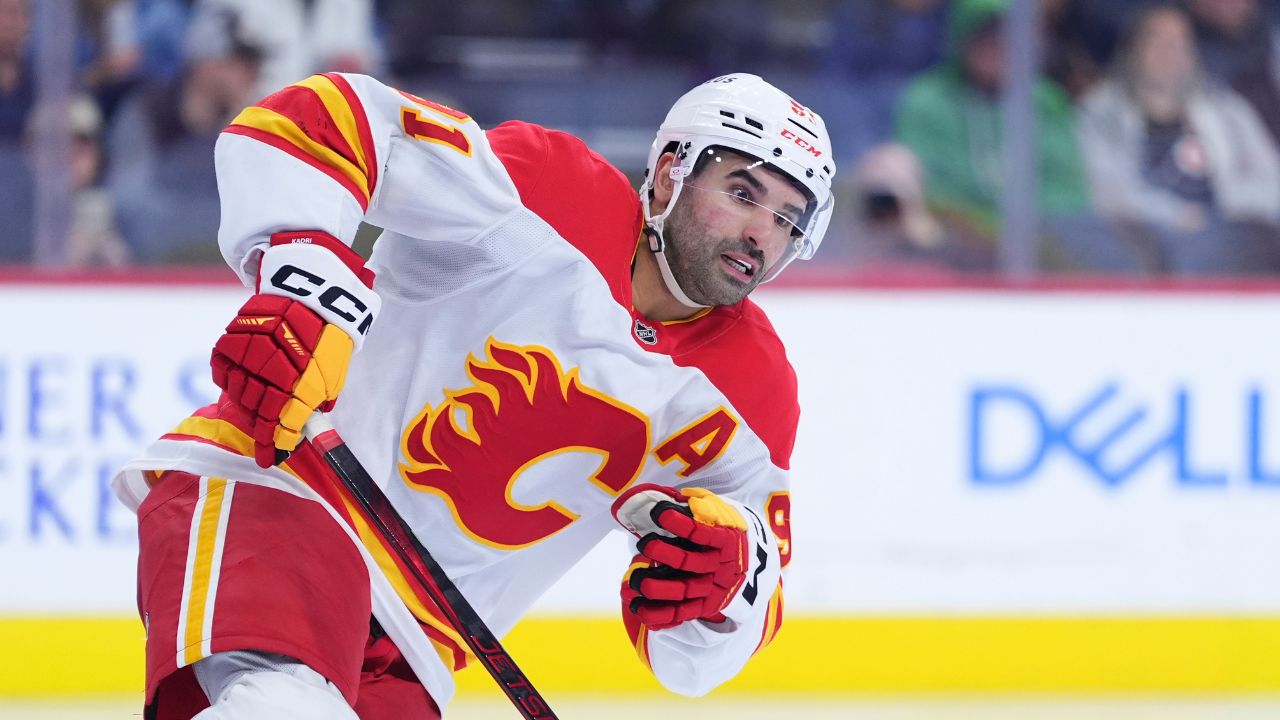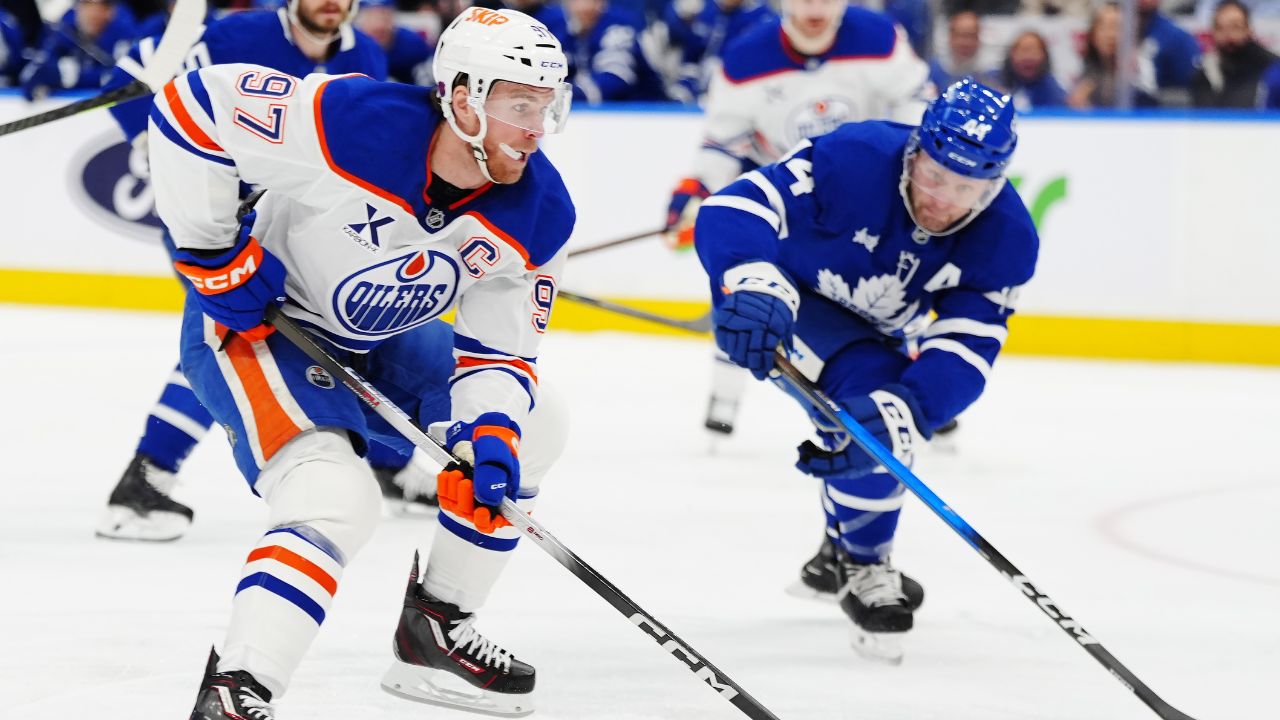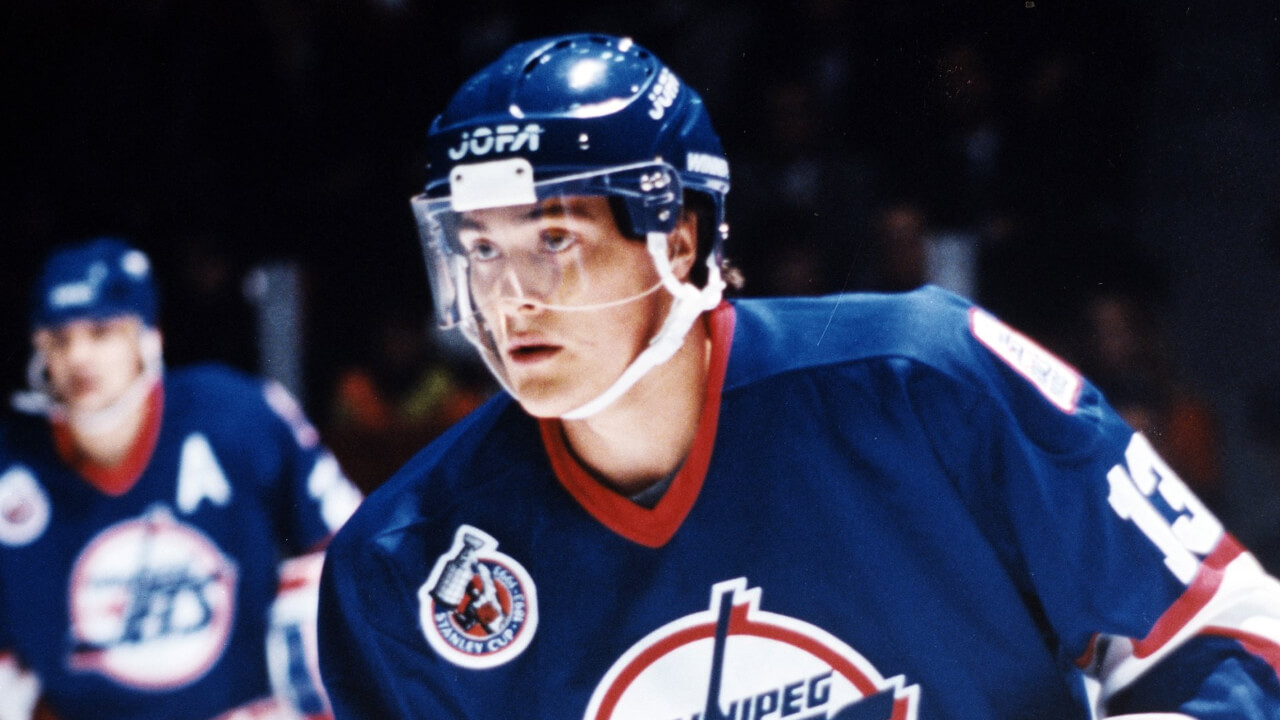
“NO QUIET SUPERSTAR”
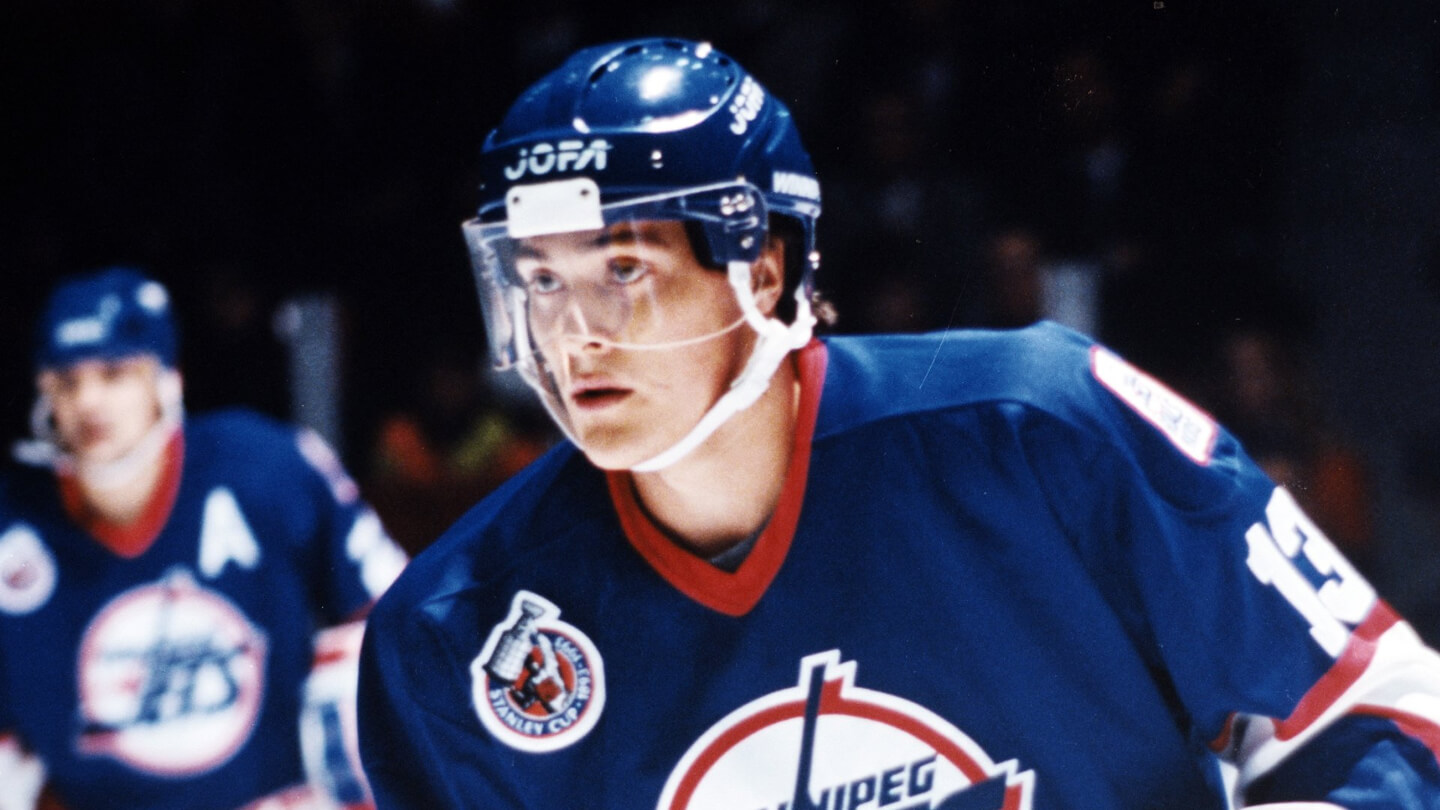
B
efore the 1992-93 NHL season began, the idea there would be a unanimous Rookie of the Year winner at the end of it seemed entirely plausible. Philadelphia Flyers centre Eric Lindros was finally entering the league 16 months after the generational prospect had been drafted first overall by the Quebec Nordiques. The big 19-year-old from London, Ont. was expected to arrive with a bang.
But there was another high-end freshman whose debut was even longer coming. Teemu Selanne had been selected by then-Winnipeg Jets GM John Ferguson 10th overall in 1988 (six spots ahead of current Jets GM Kevin Cheveldayoff). For a variety of reasons — mandatory military service, a broken leg, a desire to play for Finland at the 1992 Olympics and a fantastic situation at home starring for Jokerit Helsinki — Selanne had remained in Finland and essentially attained rockstar status by his early 20s, scoring 72 goals in 86 games during his final two years in Finland’s top league.
By the summer of 1992, Selanne had actually become the equivalent of what today we’d call a restricted free agent, because it had been four years since Winnipeg drafted him. He was eligible to sign with any club, but the Jets reserved the right to match the offer. In August, the Calgary Flames stepped up to the plate with a contract worth $2.7 million over three years. Winnipeg — now led by GM Mike Smith — had to match it, and did. As such, a kid with talent and charisma to burn began his NHL journey in Manitoba.
TEPPO NUMMINEN, Jets defenceman and fellow Finn Back then, the game was different. You really didn’t know how the style of game fits a player coming from Europe. There were a lot of good players from Europe who couldn’t put together careers in the NHL. But seeing Teemu from training camp and seeing how comfortable he was on the ice, and how strong he was, there was no question.
ED OLCZYK, Jets forward We had heard all the reports and heard everything else, but until you actually see it for the first time, then okay, now you really can see what the possibilities might be. The hesitation and reservation was, okay, well, that’s over in Finland. Now you’re coming to a smaller rink and now there’s much more physicality. But the hype machine was through the roof, and ultimately, rightfully so.
CURT KEILBACK, radio play-by-play voice of the Jets on CJOV There wasn’t any YouTube in those days. Those [goal totals in Finland]didn’t mean anything in particular.
TEEMU SELANNE I think it was very important for me to come a little bit later. At the time, not so many 18-year-olds were ready to play right away. I always remember when my agent, Don Baizley, and [superstar Edmonton Oiler and Finn]Jari Kurri told me, “It’s a tough world. Make sure when you come you’re ready 100 percent.” In 1989, when I broke my leg and I missed the whole year, that gave me another year to get better.
MARKO LEPPANEN, Finnish author of the 2022 book Selanne He was super ready [by 1992], physically and mentally. Great confidence.
NUMMINEN The excitement [in Finland]was there already. Teemu was well liked and known in Finland. He was really the star player in the Finnish league. The media came along with him already and the fans were following him. The Finnish fans were already there.
LEPPANEN A lot of newspapers doing articles, sports magazines for sure, but music [and culture]magazines, too. He was the first big, mainstream hockey star in Finland. Because Jari Kurri was very good, but he was more of a private person. Selanne was so open and laid-back and friendly.
SELANNE The turning point for me was when I came to Winnipeg to watch [the 1990]playoffs. I had a whole year out, it was three or four months before I could start skating again after I broke my leg. I experienced playoff hockey. After the first game, I was scared. It was just so violent and so physical, it was almost like a war out there. I’m not used to that in Finland. I don’t think the hockey was that important in Finland. I remember I told my dad, “These guys are animals out there.” I went home and I said, “I better be ready.”
It didn’t take long for Selanne to establish himself as a threat in North America. His first NHL goal came versus the San Jose Sharks at the Cow Palace in his second career game. He scored again in Game No. 3, then netted the first of his 22 career hat tricks in his fifth outing.
OLCZYK I just remember the first game where, and these are my words, he couldn’t believe he didn’t score. I just told him, “You got your chances, man. It’s going to happen. Don’t worry about it.” He had a couple great chances and just wasn’t able to do it and being one of the veteran guys, older guys, you just say, “Hey, don’t worry about it. It’s going to happen.” I think he scored the next game and then had four or five in three games or whatever it was.
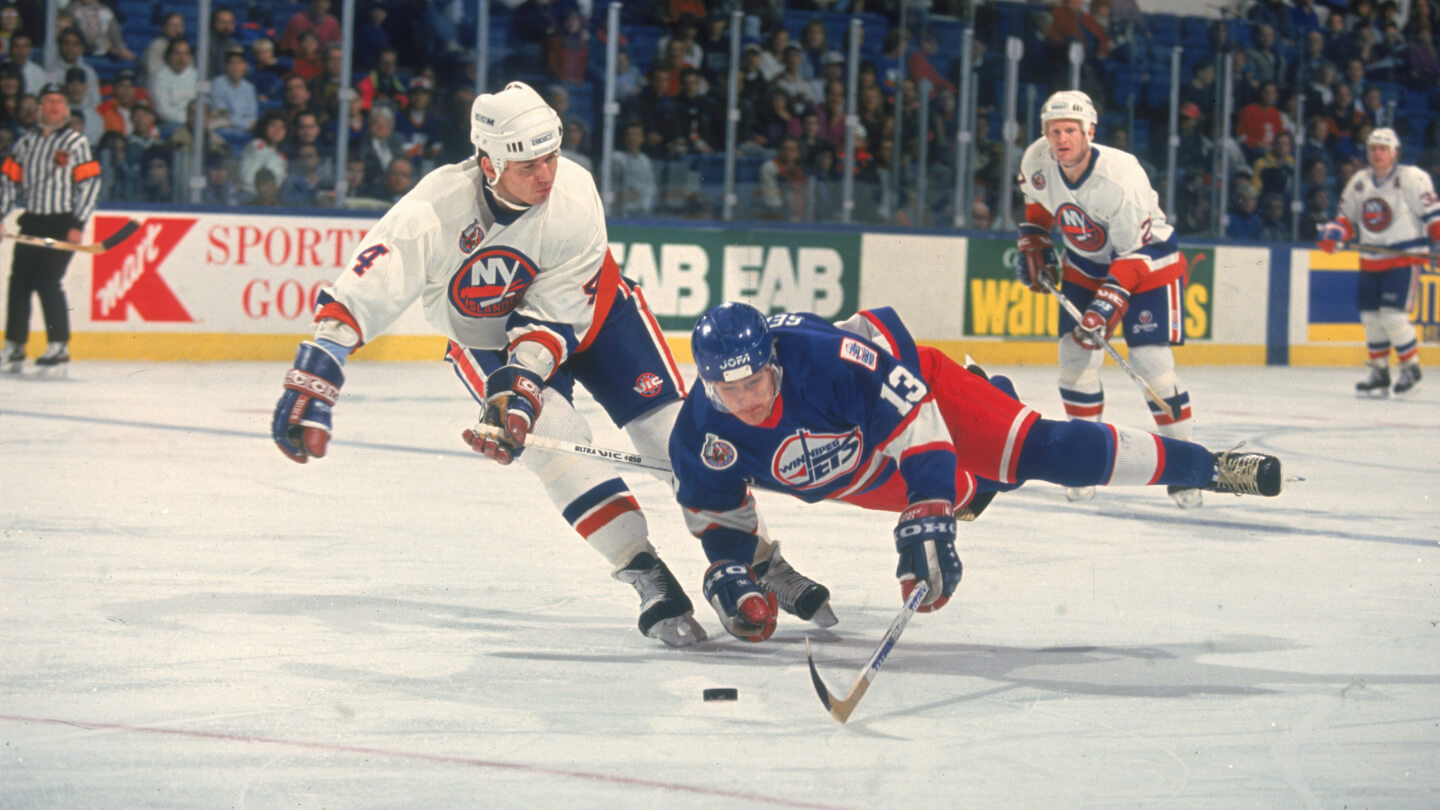
TIM CAMPBELL, beat reporter for the Winnipeg Free Press The feeling [then]was a lot different than it was in August when they were really cranky that they’d had to pay so much money for this guy who’d never been in the NHL. And you know, certainly his reputation was good and he was a high draft pick, but I mean $2.7 million in 1992? That was a lot of cash. Once that [early scoring]happened, there was some element of relief. And then it wasn’t only relief, it was relief combined with some real anticipation.
SELANNE I always knew that I could score the goals if I had the right opportunity to play with great players in a big role. I always said how lucky I was to come into Winnipeg. I felt the table was ready for me. First of all, Teppo was there, he’s been huge for me in all those years. He was a big brother for me there. Also, I got to play with the best players and first power play. It was almost like a snowball going down the hill.
OLCZYK He could score a lot of different ways. And he’s just one of those guys that, he seemed to get faster when the puck was on his stick. Most players it becomes an anchor and you slow down, but when he got it he was able to take off and gain that separation.
JOHN PADDOCK, Jets coach He would be a popular guy no matter where he was. And then you enhance that popularity when you go out and produce like he did. And he soon became a central figure on the team.
OLCZYK Fit in right away and I think that made it easy. I don’t think there was any hesitation. He was very confident and comfortable in the setting that he was in right away.
THOMAS STEEN, Jets forward He was open all the time, and lots of breakaways. It was phenomenal.
PADDOCK I think in a game that was viewed as slower than it is now, his speed was eye-opening. In that era, for me, I mean, there were lots of really good players but him and [Pavel] Bure had that electrifying speed that not many guys had.
CAMPBELL They had [two other heralded rookies in]Keith Tkachuk and Alexei Zhamnov. They were kind of the three linchpins. And Phil Housley on the back end was so important to the things that went on that year. I cannot emphasize that enough.
BOB ESSENSA, Jets goalie [Housley] was basically like a very gifted forward playing defence.
KEILBACK Phil Housley, when he had any room at all, any time at all, he was looking for Teemu breaking through the middle. And some of those passes, they were like seeing-eye passes. They were right on the tape, Selanne wouldn’t even have to break stride. And of course he had that speed. So once he was behind anybody, nobody’s going to catch him.
STEEN [Zhamnov, Tkachuk and Selanne] fit each other perfectly. A goal-scorer and a power forward and a two-way centre. It was hard to start the game with them because each one wanted to be No. 1. But when they didn’t think about those things and they just played, they were phenomenal together.
KEILBACK Even though Selanne and Tkachuk were scoring a lot of goals, the team was losing a lot more games than they were winning.
PADDOCK Mike Smith had a good pulse on the team. I remember calling him after a game in November sometime, just where teams were starting to abuse [Selanne]. And I said, “We need to do something with that.”
CAMPBELL It wasn’t a one-night thing, it had been going on a bit after he started to score and the league could sort of discover how good these other [rookies]were too. They were all young. So this has been going on for a little while, but the game, the boiling point occurred on Boxing Day in Minnesota against the North Stars, and they lost the game 5-4. And my recollection [is]that was sort of the game where John Paddock snapped. He just he couldn’t bear it anymore, that these guys were getting pushed around and kind of taken advantage of. And so two days later, [Smith] made the trade, a straight two-for-one for Eddie Olczyk.
KRIS KING, acquired from the New York Rangers in the trade Well, I remember sitting in the press box at MSG on a Sunday afternoon game and sitting beside [Tie Domi] and it was not very often in our three or four previous years together in New York that we’re both sitting out, especially against a rival like the Bruins. So you kind of felt that maybe something was up. So the next morning we got called into [coach Roger Neilson’s]office and he told me, “I’ve got good news and I got bad news.” I said, “Well give me the good news.” He goes, “Well, you’re going to Winnipeg.” And I said, “That’s good news? God, what’s the bad news?” He said, “Tie is going with you.”
The Jets were 13-19-3 when Smith made the move to bring in some muscle. With Domi and King in the fold, Winnipeg went 11-1-2 in its next 14 outings.
CAMPBELL It was pretty dramatic here. The reception of the trade was about as good as you could ever hope for. Within two weeks the Jets were making posters of Kris King and Tie Domi, ‘The King and I.’
KING They had Tkachuk, Zhamnov and Selanne ripping things up as three young guys. John Paddock and Mike Smith told Tie and I directly, “We got you here for a reason: These guys are going to be good and if we’re going to win, we’re going to need them to be good. And once through the league, everybody starting to take liberties with them, so you guys can figure out what you’re here for.” Teams started to notice the Jets a little bit more and, you know, Tie and I did what we were brought there for.
PADDOCK It was great for the team and the franchise, for Winnipeg to get media attention. It seemed easy for small-market teams to get lost in the big picture. Overall, we had more people wanting to talk to [Selanne] or the team after every game, especially on the road when you go to Toronto and Montreal and places like that.
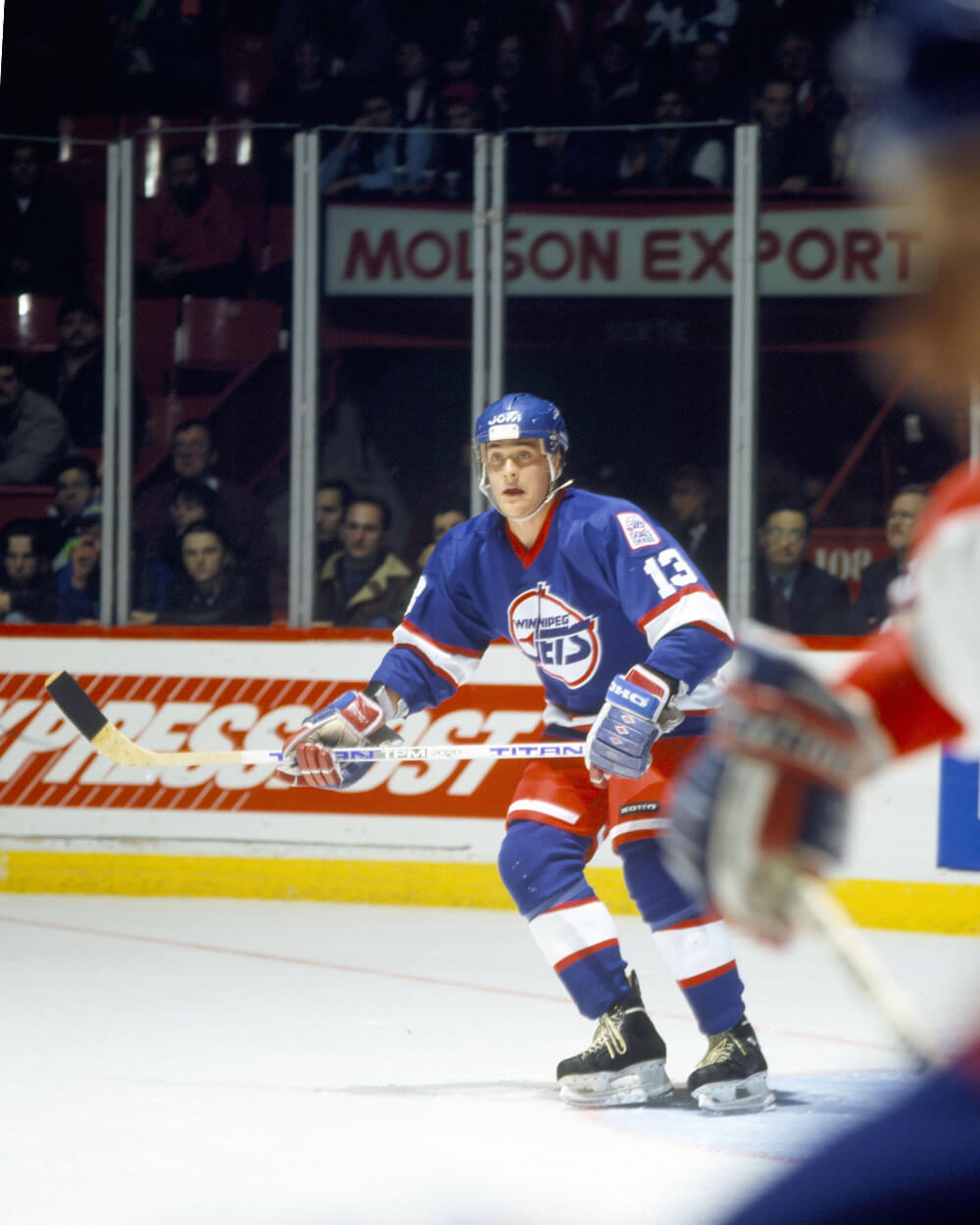
Selanne certainly had the gregarious personality to match his outsized accomplishments on the ice. When he was playing for Jokerit, Selanne used to volunteer in a kindergarten class a couple times a week just to give himself something to do after practice. And while he was nobody’s definition of a rink rat, he certainly knew the value of discipline. As a kid, Selanne had a chin-up bar in his room and his dad, Ilmari, told him to do a few every time he walked in or out of the room. Fun always came after chores. When it was time to play, Selanne wired pucks past twin brother Paavo and he never stopped firing darts.
KING Teemu could beat anybody to a loose puck. He shot off the stride. He was like [708-goal man] Mike Gartner in a sense, where he knew where he wanted to shoot and the puck went there.
CAMPBELL He could be absolutely asleep in a given game, but you took your eyes off him or gave him some opening … he was so fast, it was just astounding.
ESSENSA He literally came into the dressing room a minute-and-a-half, two minutes before we were headed out there. He was the fastest changer, maybe in the history of the game. He did not spend any excess time in the locker room. He did everything fast. He loved fast cars.
KING Well, he didn’t practice hard, at least not as a young guy. I remember [defenceman]Dean Kennedy — who was a grumpy old bugger and one of my favorite teammates I ever had — would give it to him every single day before he got on the ice. And he was always the last guy on the ice because we’d be walking down the hallway with about three minutes [to go before practice]and he wouldn’t even have his equipment on, you know, he could dress so fast. But he’d always get out there on time and Dean would always say, “Teemu, you can’t be a pro if you’re never on time.” When he got on the ice, he just kind of had fun. That was Teemu.
PADDOCK He was no quiet superstar. He was just developing into a superstar, but he was exuberant. He would sign autographs all day if he could. It was a personality that’s contagious and who wouldn’t like that?
CAMPBELL The problem with Teemu was he was so accommodating. He’d sign every autograph, he’d do most every interview. They tried to herd him and shepherd him around and manage his time, but he would never say no to anybody.
ESSENSA He sat beside me in the locker room, and this is long before the league had guys like myself [a goalie coach for the Boston Bruins now]who overanalyze opposition goaltenders. He’d be putting his gear on, you know, frantic-mode a minute or so before we head out. More often than not [he’d ask] “Who are we playing tonight goalie-wise? Where do I shoot on him?” Not that he always listened, but he was obviously very coachable.
KING Once the game started, it was almost like there was a switch. He was all business. As he started to get closer to the record — I don’t think he really cared too much about it, at least he didn’t let on he did — it was us as a team that started to kind of focus in on the fact that this was really just an absolutely incredible, incredible run.
SELANNE I didn’t read the papers, not in Winnipeg, not in Finland.
Selanne had 47 goals in 62 games, leaving him six shy of the rookie record Mike Bossy set in 1977-78 with 53 for the New York Islanders. Games 63 and 64 were slated for the Winnipeg Arena against the Minnesota North Stars and Quebec Nordiques, before the Jets headed out on a four-game roadie. On the last day of February, Winnipeg welcomed in the North Stars.
SELANNE I knew a lot of people didn’t believe that in two games you can score seven goals, I didn’t believe it either. People were talking about how it was probably going to happen on the road.
KEILBACK He wanted to break the record in Winnipeg. I remember thinking, “Well, maybe you can get three in those two games and get to 50, that would be good.” [I never thought] that he would score four in the first game.
CAMPBELL I know I’ve only seen [legendarily stoic North Stars coach]Bob Gainey cranky or angry or upset but once in my life, and it was that night.
KING Once he got the four it’s like, “He’s going to get a hat trick [against Quebec], there’s no doubt.” And we’re kind of joking about it, but I remember the people in the city, like they knew they were coming to that game to see something special.
KEILBACK Before the [game versus Quebec], I remember wandering through the lobby and talking to people there and every single person I talked to without exception said they came to see Teemu score three goals and break the record. And he did it.
SELANNE The speculation was like, could it really happen in one game, getting three more?
KEILBACK It started early, he scored the first of the three goals 15 seconds into the game, he had a breakaway. And then he scored again in the second. And then I remember that goal in the third, of course, it’s been replayed a million times. Tie flipping the puck out and the race with goalie Stephane Fiset and [Selanne] flipped it over top of him into the empty net.
SELANNE It wasn’t anything that I took any pressure over. I knew I just had to go play and things will happen if it’s meant to happen. Then right away I got one goal in the first period, then the second goal in the second period. Then the way the third goal happened, Tie Domi flipped the puck [up over the neutral zone]and I just raced [past Nords defenceman]Adam Foote. It wasn’t a normal goal.
KEILBACK The whole duck-shooting [celebration]and the place went nuts.
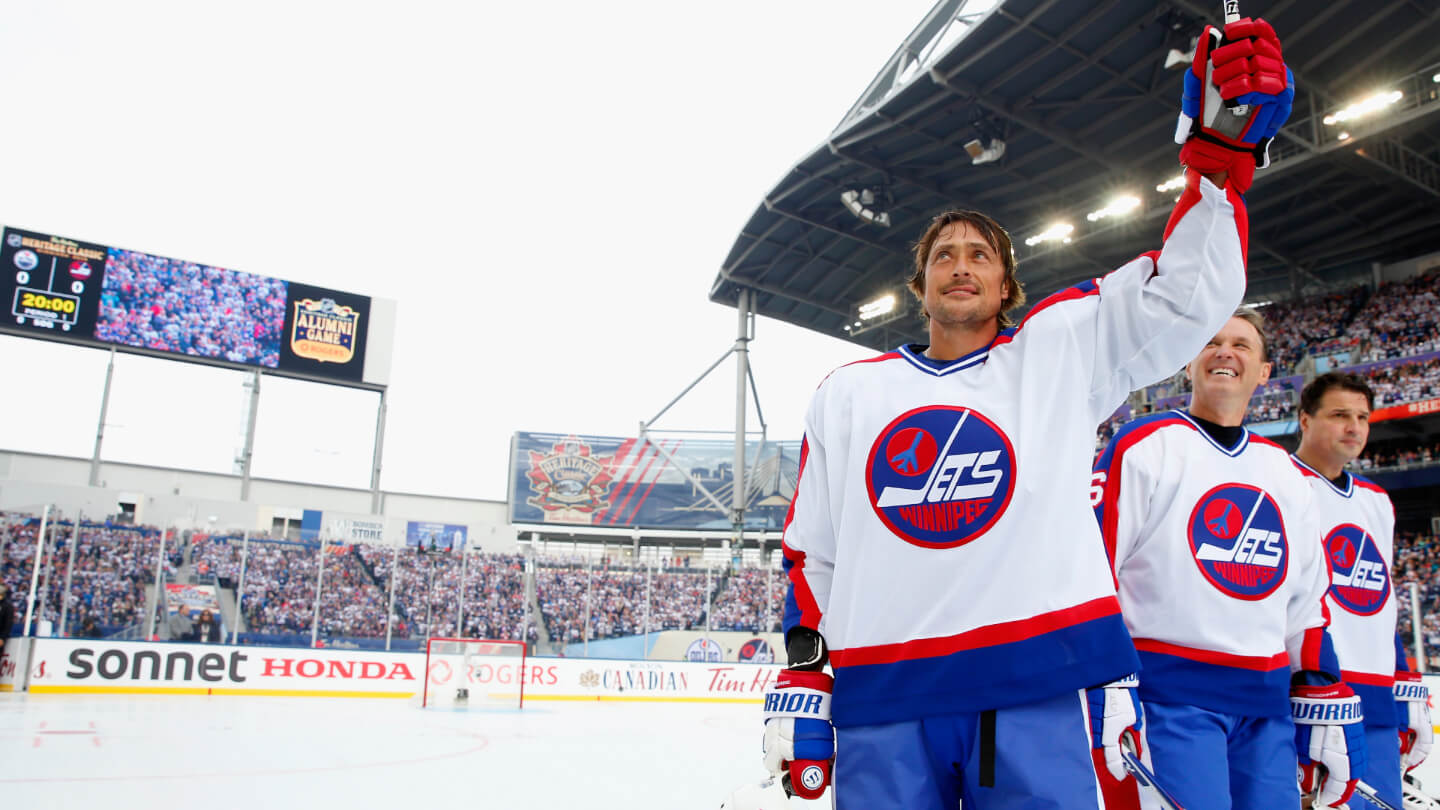
SELANNE Of course, the celebration now when I look back, I shake my head like, “What are you doing?” It’s a little embarrassing to watch later. But at the time, the excitement, I wasn’t planning on doing that. It just came from my heart. The electricity and the atmosphere in that rink was just incredible. I’m super lucky it happened at home. You could share that with all the fans and the city of Winnipeg. It was magical and it was meant to be like that.
KEILBACK They stopped the game [to present Selanne with a silver stick]. Something that’s been forgotten: Right after that goal was scored that gave the Jets the [4-3] lead, Quebec scored [four times in 3:34]and won the game [7-4].
The Nords may have left town with a victory, but nothing could dampen the excitement around Selanne passing Bossy. And he wasn’t about to stop there. He bagged two more in his very next game in Edmonton. In 18 games from Feb. 23 to April 1, Selanne hit the back of the net 28 times.
He wasn’t the only guy in the league lighting it up. Mario Lemieux, having returned from treatment for non-Hodgkin lymphoma, was eating into Pat Lafontaine’s points race lead every time he touched the ice. In all, 14 players hit the 50-goal mark that year during an 84-game season. One of them was LaFontaine’s Buffalo Sabres running mate Alex Mogilny, who was already sitting on 63 goals when Selanne notched No. 54 against Quebec. But the Finn’s scorching stretch run allowed him to chase down the Russian, just as Lemieux was reeling in LaFontaine. It was a scintillating time for the league, with Selanne and Winnipeg in the middle of it all.
STEEN It was so exciting because it never happened in Winnipeg. That was something that happened in Edmonton with Gretzky.
KING We were watching it every day, this guy, and we just said, “There’s no way he’s not going to score the most goals in the league.”
PADDOCK One of them had a lead and the other one caught up. That became a focus for us — and for [Teemu], I’m sure.
SELANNE When you play with great players, and they feed you, and you’ve got success, you want to get more and more. It was something that I didn’t really feel [the pure hunger to score goals]after that, even the Stanley Cup years later on [in Anaheim]. I don’t know if the right word is greedy, but you can’t stop. You want to keep going and it was a great feeling.
ESSENSA As much as he had this happy-go-lucky attitude and infectious personality — you can’t help but love the guy — he was competitive, too.
PADDOCK Buffalo was playing the last day of the season, same as us, and with the time change they were ahead of us. We knew Mogilny had scored [two goals after going goalless in six games]to get to 76. I remember [Teemu’s] 76th goal [in Edmonton]clearly. It was a faceoff in our end. Him and Housley had great chemistry and Phil, when we won the faceoff, he went behind the net and then came back out that side quickly to get Teemu right at centre ice for a clear breakaway. And so, they were tied.
KEILBACK It was pretty exciting, especially when the Jets had a two-man advantage against Edmonton in the third period. But the thing was they kept feeding the puck to Selanne and he kept shooting, and Bill Ranford was the goaltender, he knew where the puck was going all the time.
PADDOCK And then — I say this jokingly, but I’m sort of serious — I said to [Teemu] afterwards and probably said to the coaches, “I should have just told him to go to the front of the net.” Because I could see from our bench at the time, to my right, how Edmonton was just totally covering him. And Bill Ranford – it seemed like, and I might be overstating it – Bill Ranford didn’t care if anybody else scored. So, Housley and [Fredrik] Olausson were our point men and I’d see Freddie Olausson with the puck at the right point. And all we’d try to do is keep passing to Teemu to score from that faceoff dot. And again, I’m saying it sort of jokingly, but it was true to a point: Bill Ranford was facing Teemu before Freddie Olausson passed — he could’ve shot the puck into an open net from 60 feet. It was just like, why didn’t I just tell him and Tkachuk to switch places? Go stand in front of the net, because he could get a deflection. It was so obvious. So, I remember the 76th and I remember, in joking fashion, “Well, we should’ve done this,” but that’s just the way it is.
ESSENSA I think he had a breakaway in the third that he missed that would have given him the scoring title. I remember, we were standing in the hallway after, and he was pissed. I mean buddy, you just scored 76 goals as a rookie [but]he was literally pissed he didn’t win the crown outright.
KEILBACK It was a magic season and that particular couple of days [when he broke the record]were a magic time to be around the kid and to be around Winnipeg. It was really exciting. And you couldn’t help but cheer for him.
KING There are certain guys that you have a chance to play with who really affect the game when you’re there in real time. And then after you go your separate ways and you play against [them]and even when you retire and you see them for different reasons. It’s always certain people that bring those good memories back and Teemu was definitely one of those for me. I didn’t get a chance to play with him long enough. Everybody thinks Teemu was in Winnipeg for 15 years. [Given how much he accomplished], he wasn’t there very long [only 231 games in three-plus seasons]. But the effect he left on the community was similar to the effect he left on me because he was just a super, super great kid who loved the game.
SELANNE I’ve always said that I’ve been very lucky, everywhere I went, I really created a great relationship with the fans. It’s part of my personality. I like to meet people, I’m not shy, and I like to treat people well, so that’s why I made a lot of friends and fans. The Winnipeg fans, you can’t find that passion for hockey anywhere. At least the places I played. A lot of great fans everywhere I played and I’m so thankful for that support over the years. Winnipeg fans, there’s no one word, or two, or three, to really describe them. To this day, anytime I come to Winnipeg or I meet people somewhere from Winnipeg, it’s overwhelming to hear how important I’ve been for them. It makes you feel so good and proud that you’ve done something good for the people. The hockey is one thing, I always tried to treat people well and hope they can treat me the same way. The Winnipeg people are always very special. My mom was spending a long time, three or four months every year, to help us there. She said, “You’re so lucky you’re here because these people are so special, the way they treat you and all of us is amazing.” It’s a great memory and I’m very thankful for that.
— with files from Emily Sadler and Kristina Rutherford
Denis Brodeur/NHLI via Getty Images; Brian Winkler/Getty Images; Denis Brodeur/NHLI via Getty Images; Jeff Vinnick/NHLI via Getty Images.


